If I was the CEO of Japan Railways...
Japan Railways was voted the worst company in Japan to work for and I know why. Here's what I would do to fix it:
*After releasing this article:
where Japan Railways ranks as the worst company in Japan to work for, my inner train nerd became obsessed with finding out how the world’s best train company could be so bad to work for…
This obsession has led to this article; truly a passion project of mine on what went wrong inside JR, and how I would fix these issues if they appointed me as CEO!
Once upon a time, Japan Railway (JR) was the uncontested titan of the tracks, heralded as the greatest railway company in the world. With its punctual trains that arrived and departed with the precision of a finely tuned watch and the founder of the legendary Shinkansen, that became a byword for speed and efficiency, JR's network was the envy of the world. It wasn't just about getting from A to B; it was about traveling in a manner that was so seamless, so reliably comfortable, it almost felt like a futuristic dream. This reputation wasn't built overnight but was the result of a relentless pursuit of perfection, innovation, and a dash of that unique Japanese flair for harmonizing tradition with cutting-edge technology.
Oh, how the mighty have fallen…
According to the online research institute Alarm Box, Japan Railways (JR) was voted the worst workplace in Japan.
It is horrendous to read what is going on inside the company. Things like staff burnout from relentless overtime, chronic understaffing forcing people to work on their much-needed vacation days, and the added insult of diminished compensation amid the Covid-19 pandemic that destroyed the company’s profits. Things like an archaic corporate culture, which suffocates innovation and favors antiquity over merit, are driving the company into a state of stagnation. And things like the company failing to promote young talent, and a lack of a solid growth plan, only amplify the already record-high staff turnover.
These growing concerns and pressures from within have led to loud calls for CEO Yuji Fukasawa to step down.
As a bona fide railway buff and a seasoned connoisseur of the Japanese corporate scene, I reckon I'm the man to put Japan Railway back on the right track. So, without further ado, let's chug along to my grand plan for making Japan Railways great again:
#1: Dynamic pricing like the airline industry
Let's start with something that might ruffle some feathers: dynamic pricing for train tickets, akin to the wild world of airline tickets. Now, in Japan, despite the Shinkansen being a marvel of speed, efficiency, and comfort that easily puts planes and long-haul buses to shame, there's an Achilles' heel in the system: ticket pricing. As it stands, ticket prices have zero flexibility: That means, you pay as much for a train ticket if you buy it on a regular Tuesday as you do if you book it for New Years Eve!
You see, pricing for train tickets in Japan follows a very outdated model: profitable lines bear the burden of covering for the less fortunate, loss-making lines, but how these 'reasonable prices' are set is as transparent as a bowl of miso soup.
In the age where you might pay a premium for last-minute flights to Sapporo or snag a bargain on a Tuesday morning flight to Okinawa, the railway ticketing system seems stubbornly stuck in the past.
Now, imagine the possibilities if JR embraced dynamic pricing. Suddenly, taking the Shinkansen from Tokyo to Kyoto for a spontaneous weekend getaway doesn't have to break the bank if you book at the right time. Conversely, peak hour commutes might see a price hike, gently nudging passengers towards less crowded alternatives, and smoothing out the daily rush hour tsunamis of humanity.
Critics might argue that this introduces an element of unpredictability into the sacred ritual of train travel in Japan. But let's be real: in a world where we've embraced the chaos of fluctuating flight prices with the help of price comparison tools and a bit of strategic planning, could we not extend the same savvy to our train journeys?
By pivoting to a dynamic pricing model, JR could not only optimize revenue and manage congestion more effectively but also breathe new life into the venerable institution of train travel in Japan. It's high time for the winds of change to blow through the ticket booths of JR East, bringing with them a breath of fresh air... and perhaps a touch of unpredictability.
#2: Automate, automate & automate
When people think of the term Kaizen, they think of Japan’s relentless pursuit of improving everything, and this is true, and why Japan has excelled in constructing the best cars, the best railways, and the best… well, you get the picture. But the less glamorous side of Kaizen reveals a fundamental flaw: It tends to focus on incremental improvements rather than questioning the core methods.
For example, in most Japanese offices, Excel isn't just a tool; it's the tool, treated as the ultimate solution to every new challenge that arises. JR is bogged down by this mindset, but with man-power instead of Excel sheets, and hence they throw bodies at every problem, regardless of whether it's the best tool for the job.
We need to pivot to more revolutionary ways of working, starting with:
Automating train lines - Hitachi is leading the charge globally in train automation. Many systems, like the ones in Japan and Copenhagen's S-tog, are already fully automated. These systems demonstrate the effectiveness and efficiency of such technology. For JR, embracing this technology means overcoming the hesitation that stems from automation not being as time-tested as human operation. Even though there is a high initial cost, this will lead to cheaper operations, less repetitive manual labor and lastly, a more punctual and efficient experience than could ever be achieved with man-power alone.
Updating ticketing systems - If you've ever journeyed across Japan by train, you've likely waded through the bustling sea of humanity at the ticket counters. With a staggering number of manned ticketing stations in Tokyo alone—over a thousand, to be precise—JR East upholds a tradition that, while charming, isn't exactly indispensable in the digital age. The move towards online and machine-based ticketing isn't just about embracing modernity; it's a strategic shift that promises to declutter operations, significantly cut down those pesky wait times for passengers, and lighten the load on our hardworking staff.
#3: Open-source the Train Lines
Imagine a world where the intricate, pulsing network of Japan's railways isn't just the pride of its operators but also a playground for the country's most passionate train enthusiasts. Enter the concept of open-sourcing the train lines, a revolutionary idea that's not just about software but about harnessing the collective brainpower of Japan's Train Otakus for the greater good.
Who are these Train Otakus?
Train otakus are not your average train buffs. They are the superheroes of the railway world—armed with encyclopedic knowledge of train models, schedules, and station layouts, often down to the technicalities of seat fabric patterns. Their dedication knows no bounds; they live and breathe trains. By tapping into this wellspring of enthusiasm and expertise, we could open up new frontiers for innovation in railway management.
From closed systems to collaborative innovation
Currently, JR's approach to data and system management might remind you of a fortress—impenetrable, secretive, and, frankly, very outdated. Think fax machines, photocopied data, and Excel sheets so convoluted they could be considered an art form. This isn't just a barrier to innovation; it's a missed opportunity.
A concrete example: The Yamanote line reimagined
Let's zero in on the Yamanote Line, the iconic green loop line encircling Tokyo's heart. In its current state, scheduling adjustments and optimizations are shrouded in mystery, accessible only to a select few within JR's ranks. Now, reimagine this process as an open-source project.
We launch a platform where data on train schedules, passenger numbers, and even energy consumption are freely available. Train otakus and tech enthusiasts dive into this treasure trove, applying their unique insights to model improvements. They spot inefficiencies in scheduling during off-peak hours, propose energy-saving measures for train operation, and even devise more effective crowd management strategies for stations.
In this new paradigm, lines like the Yamanote Line becomes not just a symbol of Tokyo's efficiency but a beacon of collaborative innovation, setting a new standard for railway operations worldwide. The transformation from a closed, fax-dependent system to an open-source wonderland would be akin to trading in a steam locomotive for a bullet train in the realm of data and technology. And who knows? The next big breakthrough in railway efficiency might just come from a train otaku's bedroom in a quiet Tokyo suburb.
#4: Scrap the maglev already…
The Chuo Shinkansen project, a maglev line intended to connect Tokyo and Nagoya, epitomizes Japan's ambition to redefine railway technology. Utilizing magnetic levitation, this train promises unprecedented speeds, potentially reducing the Tokyo-Nagoya trip to just 40 minutes (today around 1h 30 min).
However, this technological marvel comes with staggering costs, both in construction and predicted operational expenses. Construction of the line is expected to cost over 82 billion USD and rumors suggest that running the maglev could be up to four times more expensive than conventional shinkansen services.
Now, don't get me wrong. The idea of floating to your destination on a magnetic cushion is the stuff of dreams. But when those dreams come with a price tag that could fund a small country, it's time for a reality check. Could those billions be better spent? Perhaps on sprucing up the existing rail network, giving the hardworking staff a well-deserved pay bump, or even investing in services that don't sound like they were conceived in a lab.
JR often justifies its hefty investments with the hope on exporting this advanced train technology internationally. But, let’s be honest, most countries are still grappling with the fundamentals of rail infrastructure, making the leap to Japan's cutting-edge systems more of a pipe dream than a practical plan.
So, as we stand at this crossroads of innovation and pragmatism, perhaps it's time to ponder: is the maglev a bold stride into the future or a costly detour on Japan's railway journey?
I’d say the latter, which is why I propose a pause on the project.
My letter to Japan Railways
I am now the CEO of Japan Railways, and these are the changes I have incorporated:
Embraced dynamic pricing and shattered old norms, offering passengers both spontaneity and savings.
Taken the leap into automation, from self-driving trains to predictive maintenance, has not only streamlined operations but also carved out a future where technology amplifies human potential.
Started our open-source initiatives that has harnessed the unmatched passion of train otakus, turning their detailed obsessions into tangible improvements across all train lines on the JR.
I know, I know… Pausing the maglev project was a decision not taken lightly, but it underscores our dedication to practical, sustainable progress over flashy ventures. As I steer JR into these uncharted waters, the support and ingenuity of our team, our passengers, and our enthusiastic community fuel my confidence. Together, we're not just running trains; we're shaping the future of travel in Japan.
The calls for change have transformed into voices of anticipation and excitement. As your CEO, I'm humbled and invigorated by the journey ahead. The tracks are laid; let's embark on this journey together, towards a brighter, more innovative future for Japan Railways.
Thank you,
Rei Saito
CEO of Japan Railways

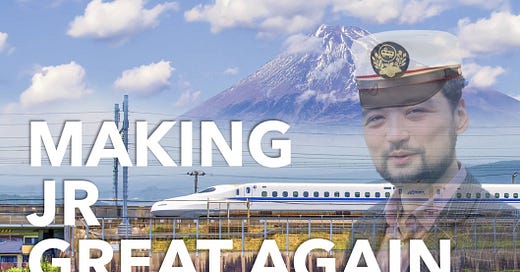




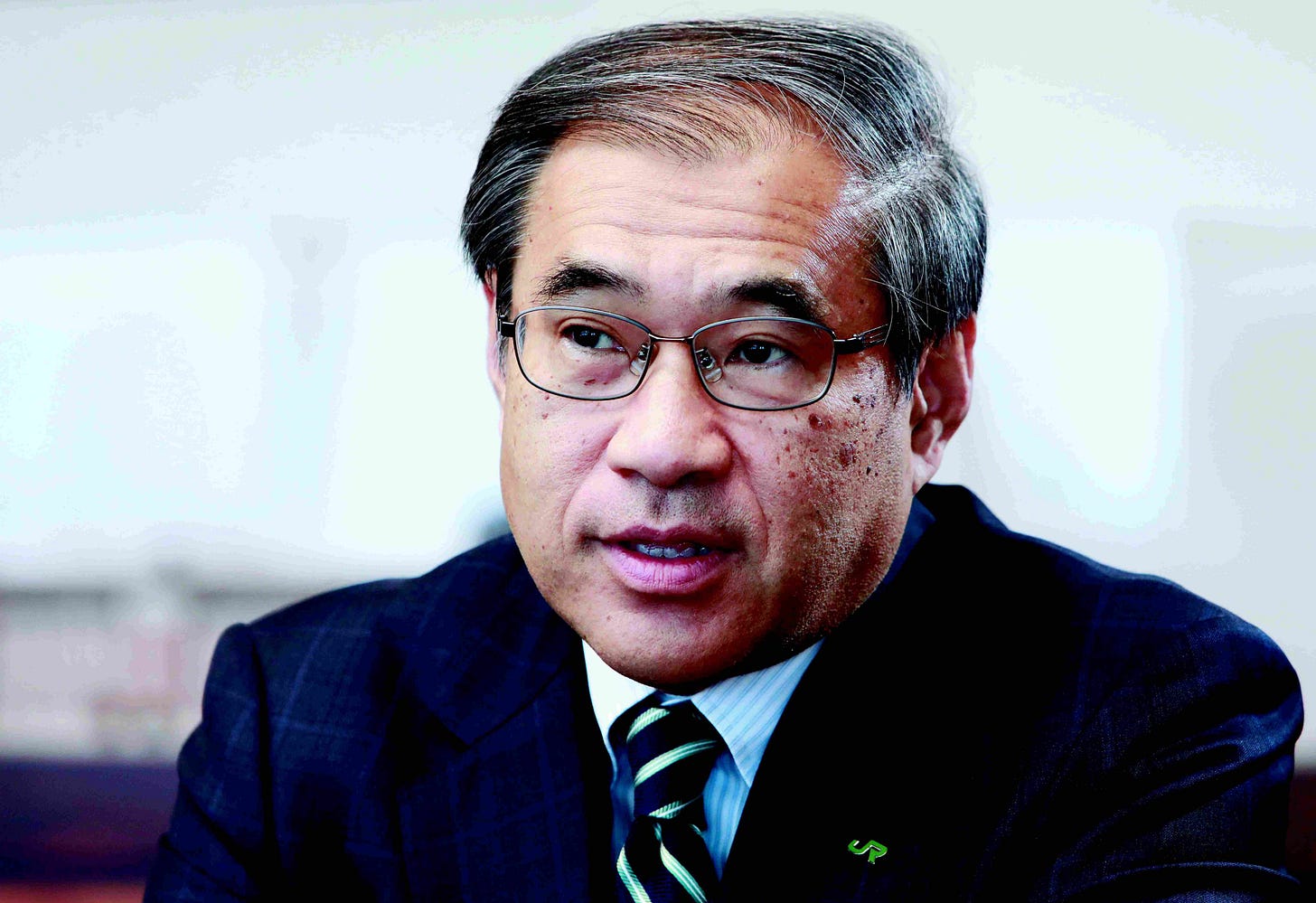


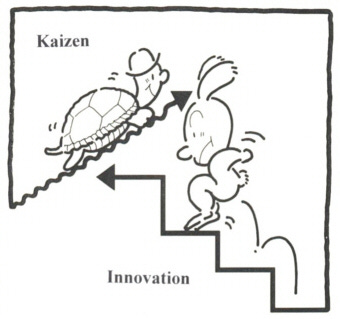
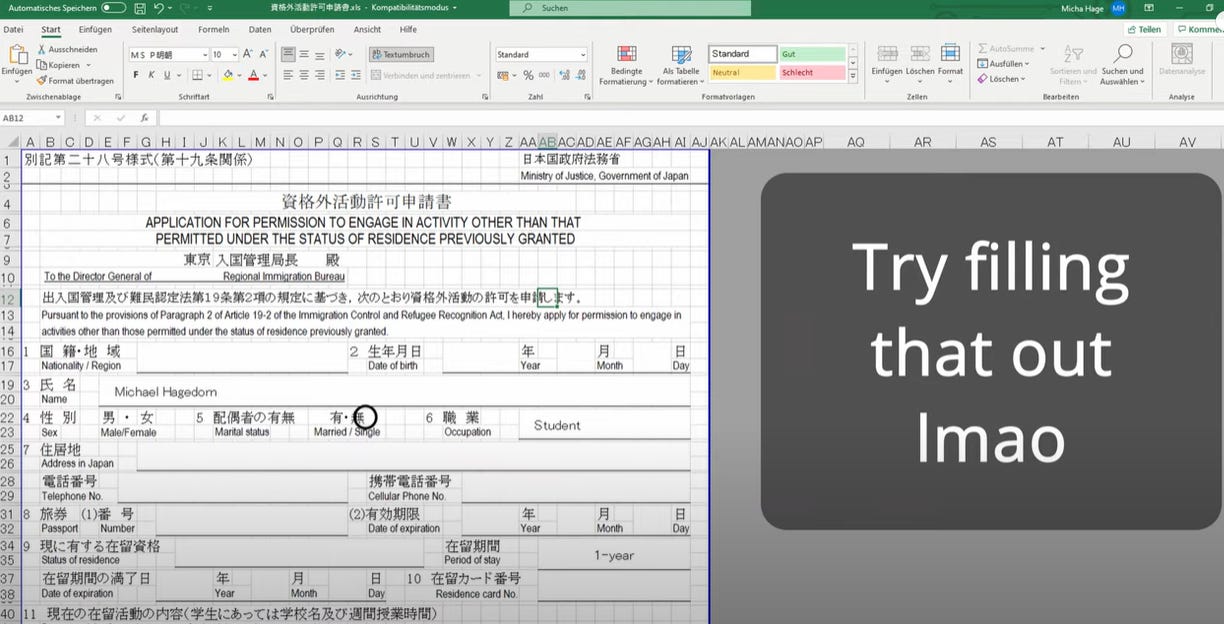

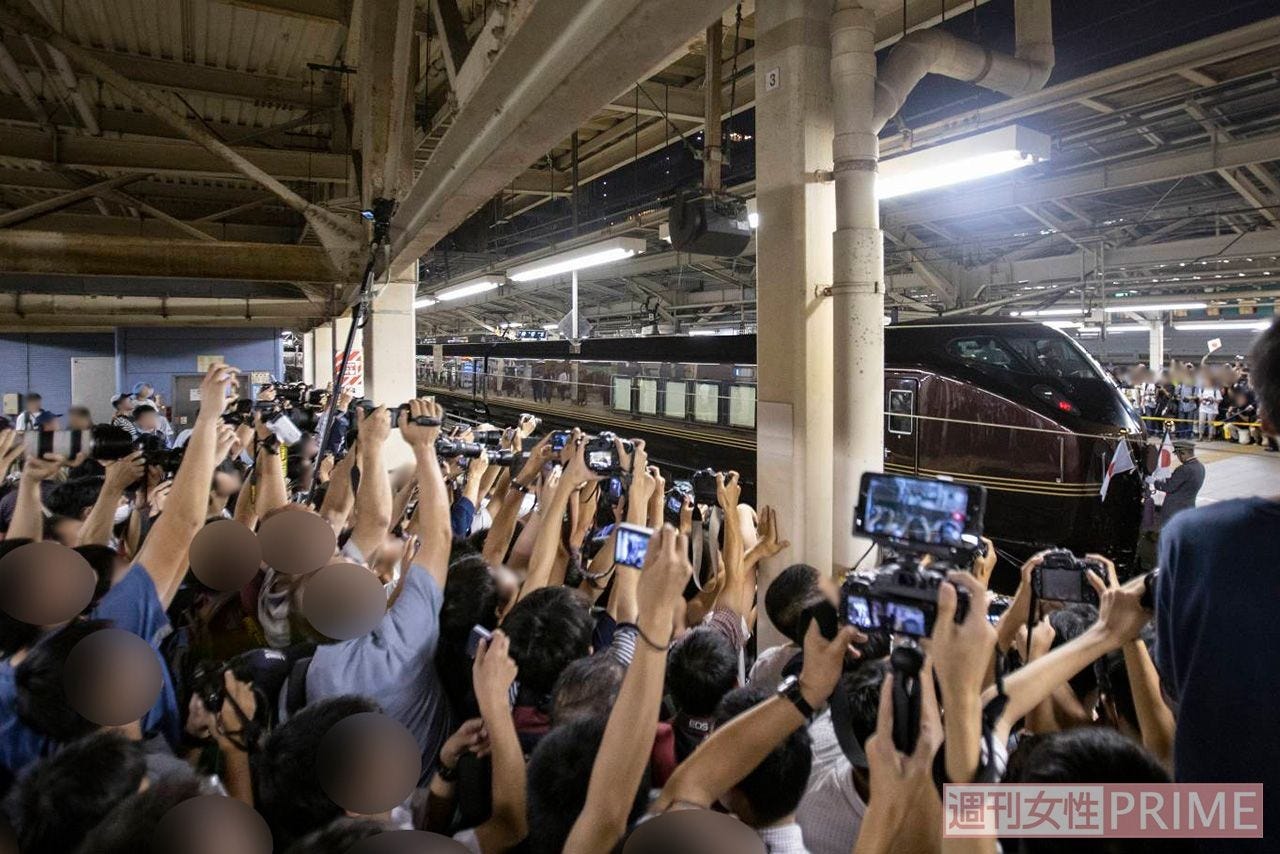
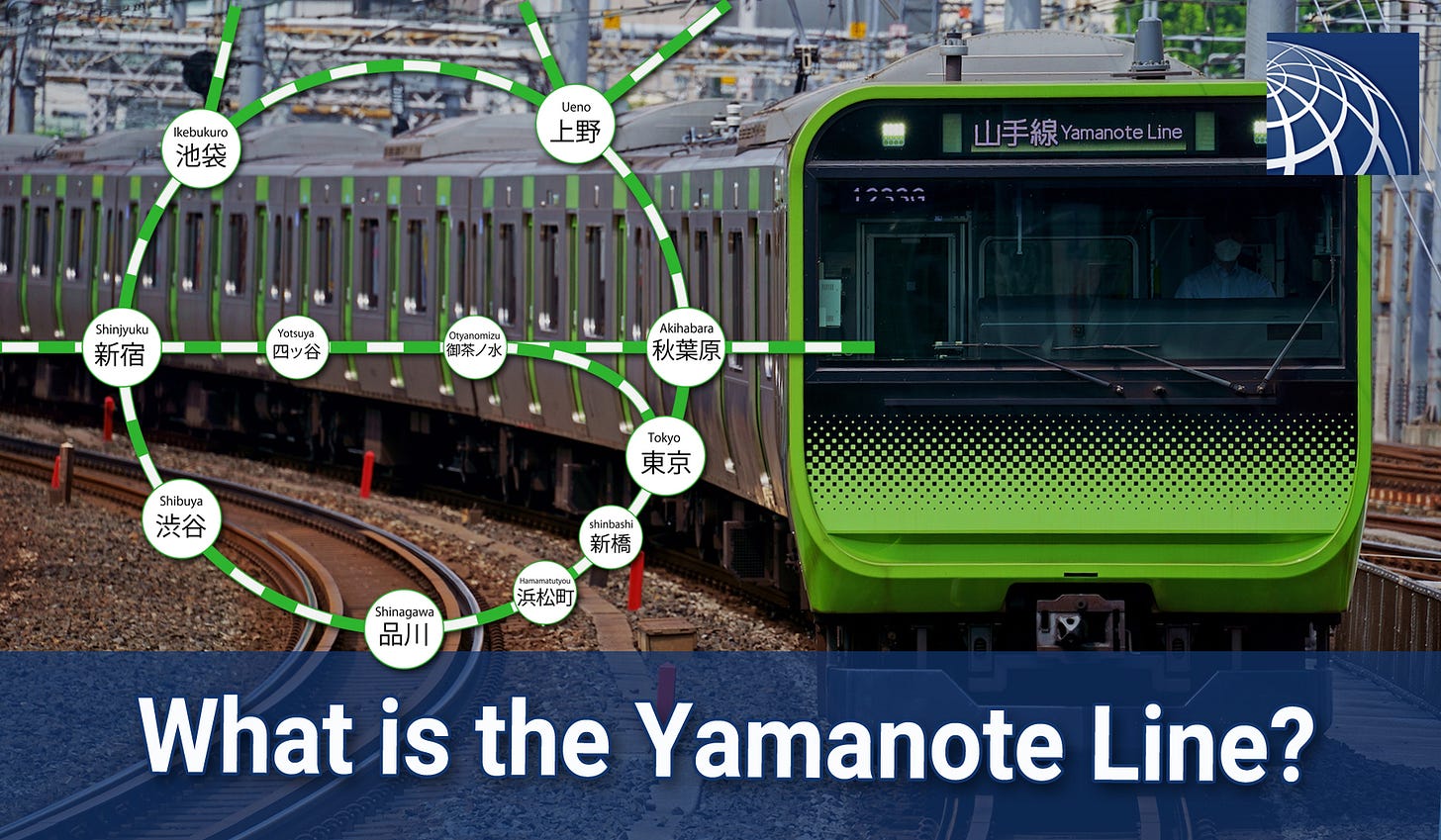
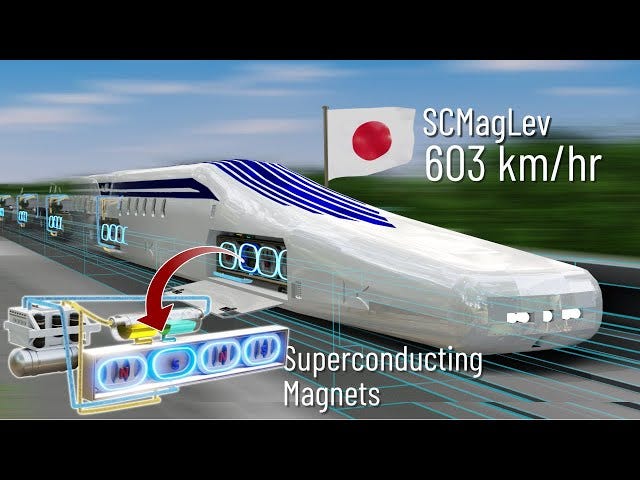
I enjoyed your article. Automation at JR has advantages, but I hope customer service still allows passengers to speak to a human in the train station; I hate trying to understand how to interact with a ticket machine. And the Maglev is marvelous but you are right; it's way too expensive. In a way, the Maglev is a victim of JR's success is operating the Shinkansen.